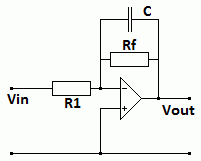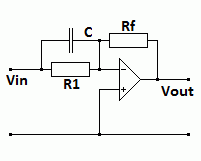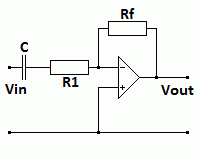Low Pass - Treble Cut

- For DC and low frequencies, the capacitor has no effect.
- The DC and low frequency gain = -Rf / R1.
- Well above the breakpoint frequency, the capacitor
reactance is very low.
- At high frequencies, the gain drops to zero due
to the negative feedback through the capacitor.
- The input resistance equals R1.
|
Treble Boost

- At low frequencies, the capacitor has no effect.
- At low frequencies, the gain = -Rf / R1.
- At high frequencies the capacitor reduces R1.
- At high frequencies the gain increases.
|
High Pass - Bass Cut

- The capacitor blocks DC and low frequencies.
- The capacitor passes high frequencies easily.
- The amplifier provides gain.
- DC and low frequencies the gain = 0.
- Well above the breakpoint frequency, the gain = -Rf / R1.
|
Bass Boost

- For DC and low frequencies, the capacitor has no effect.
- Rf must be large.
- At low frequencies the gain is large = -Rf / R1.
- At high frequencies, Xc is low so the gain drops to zero.
- The input resistance equals R1
|




